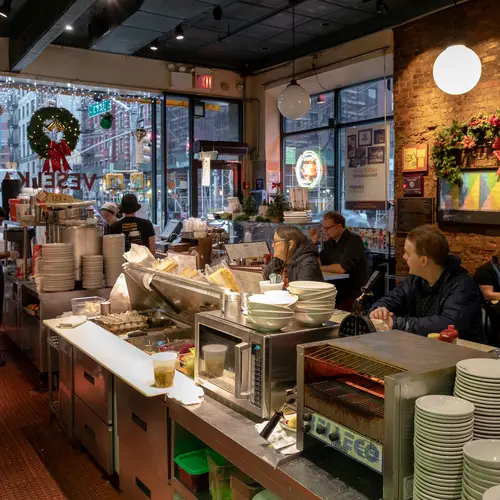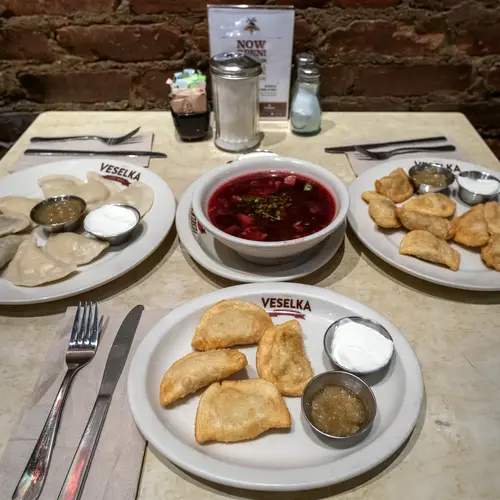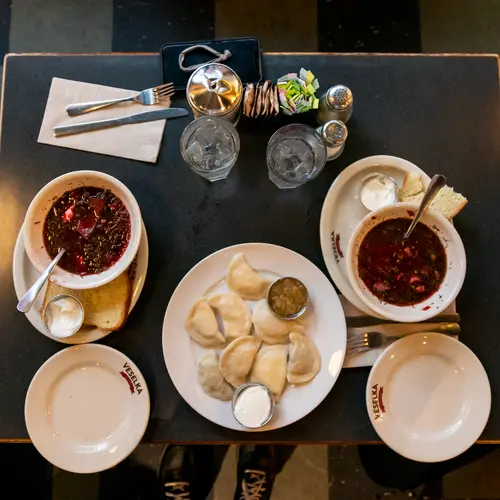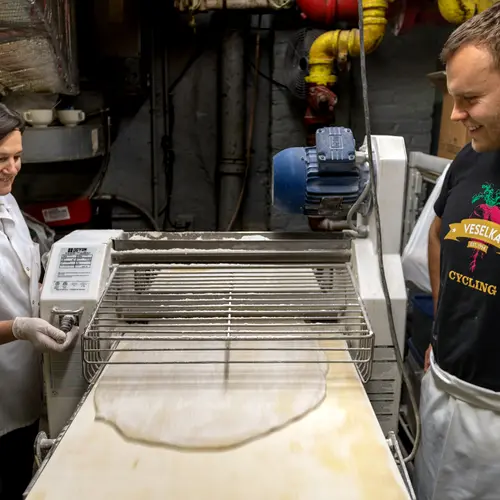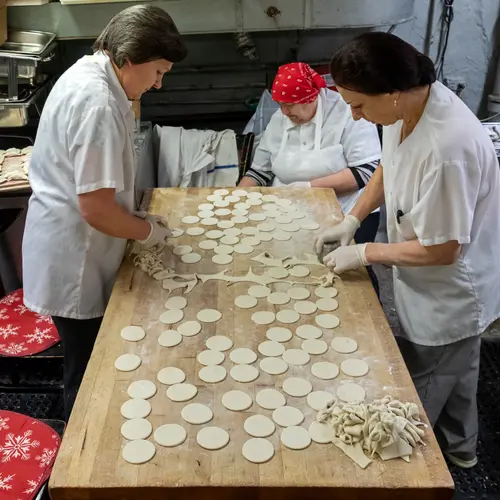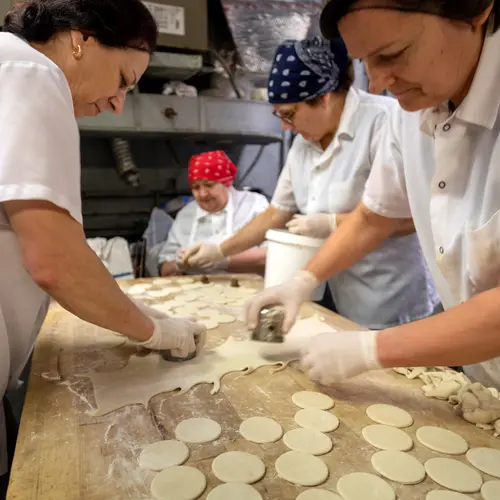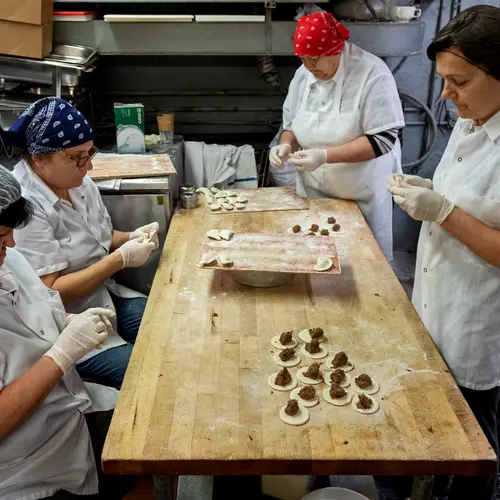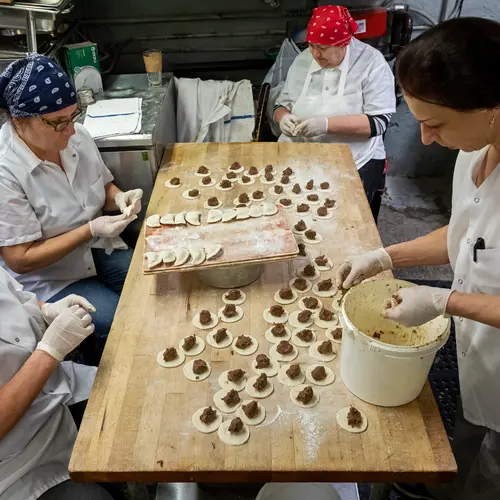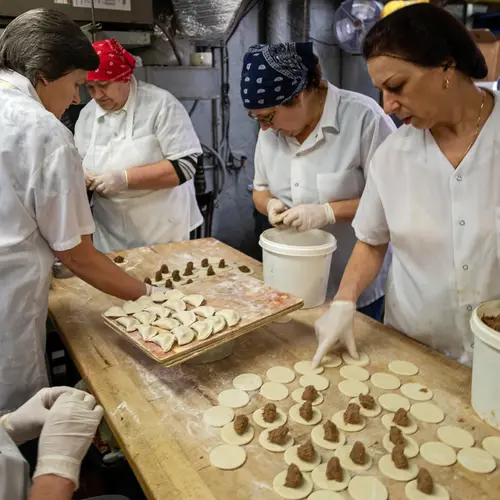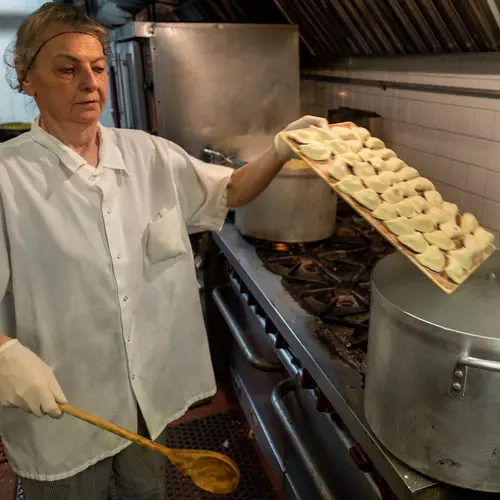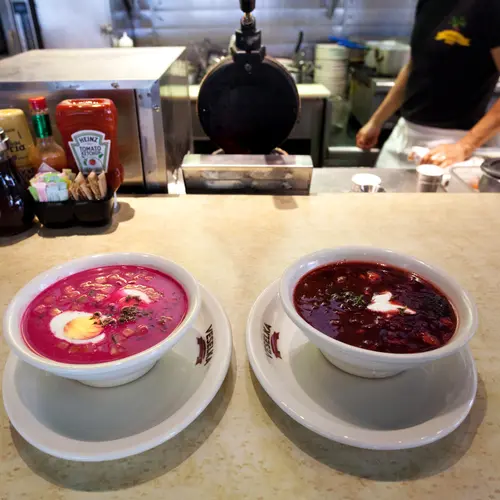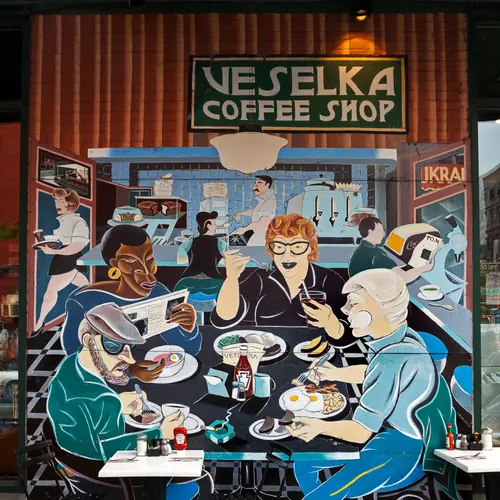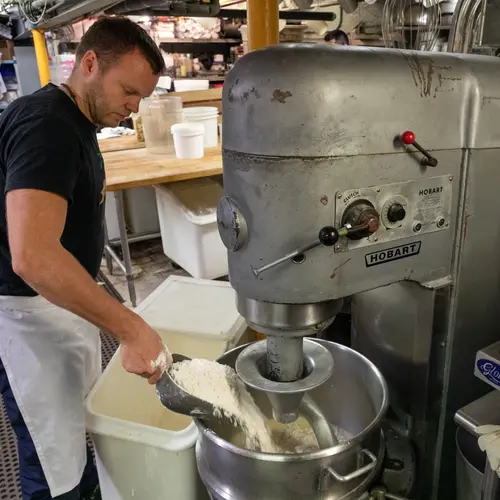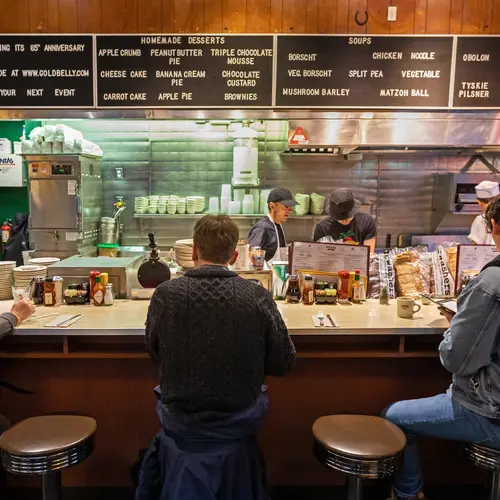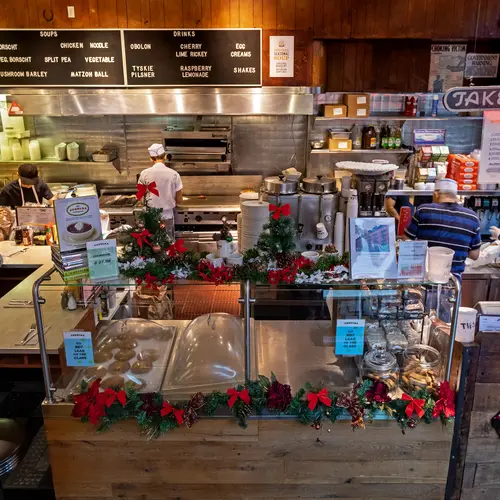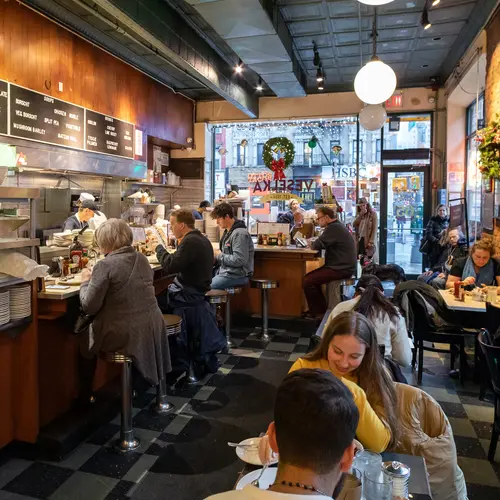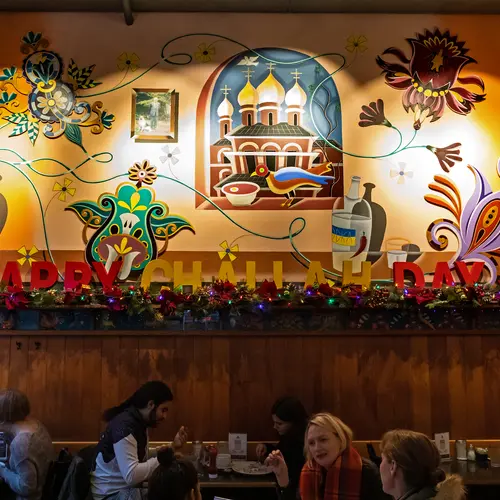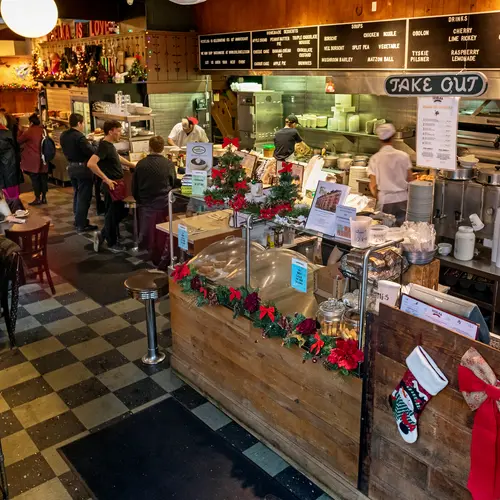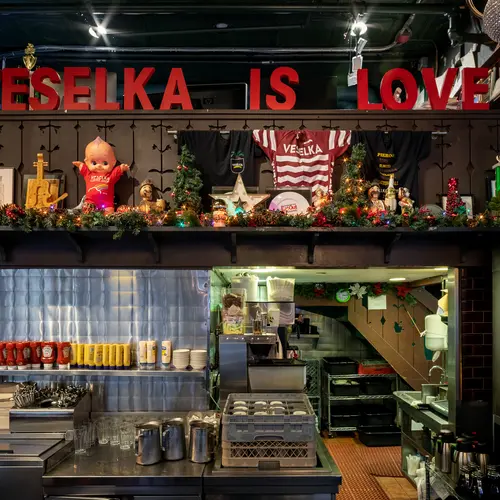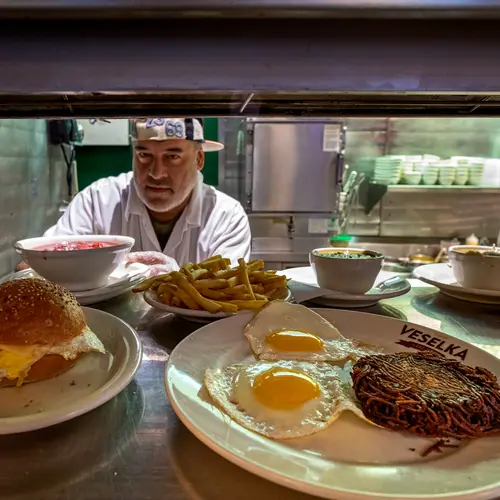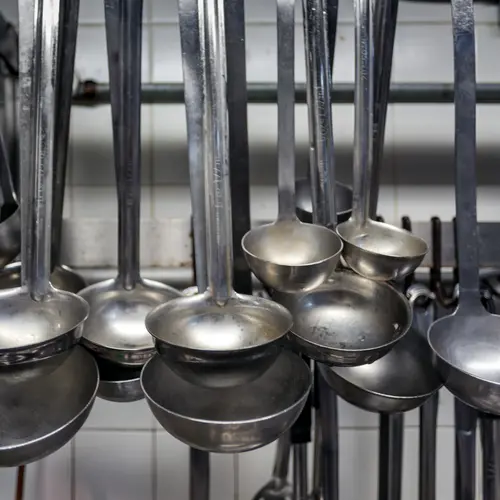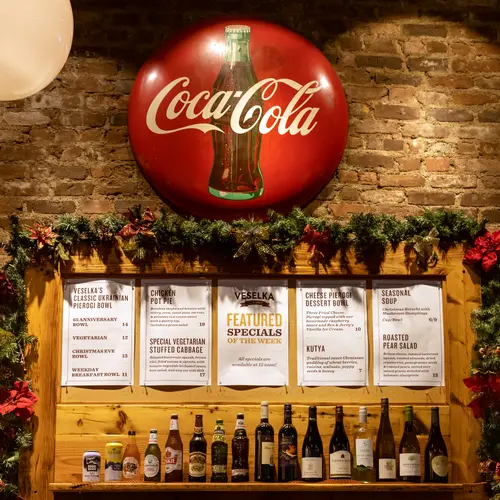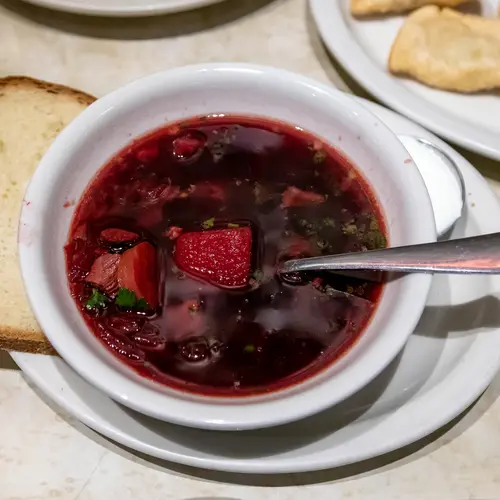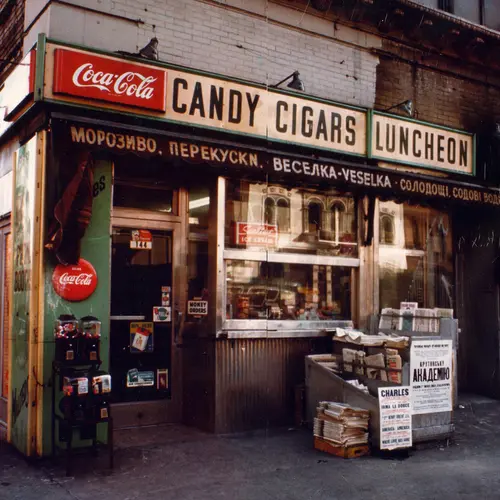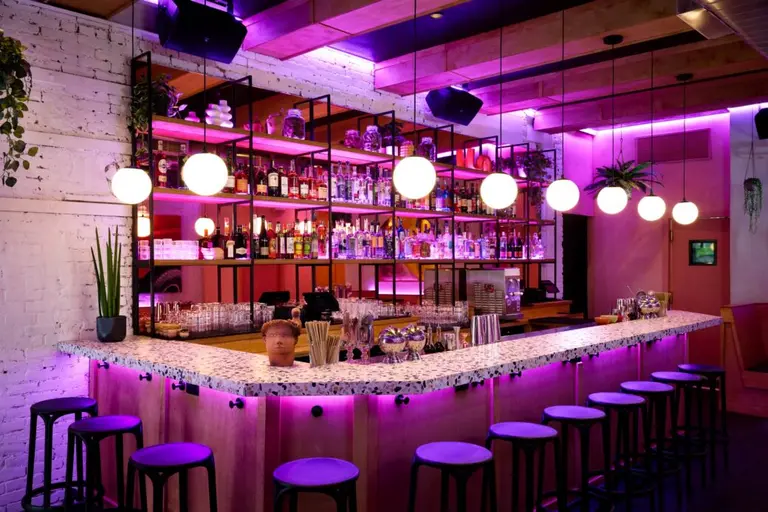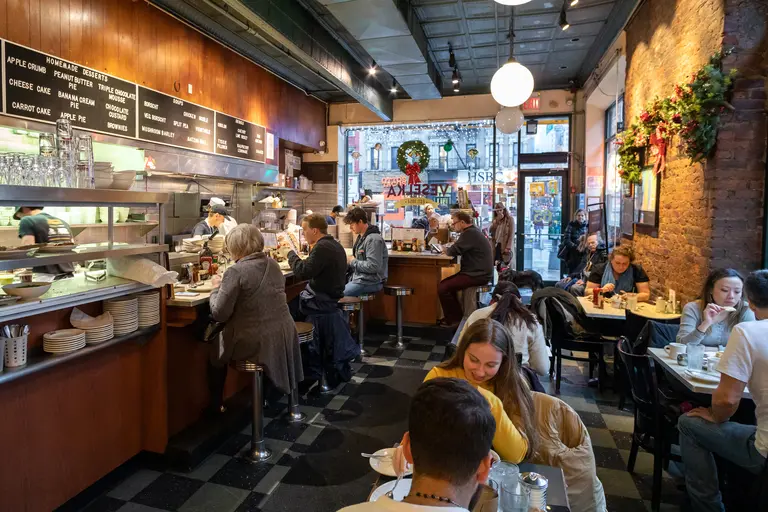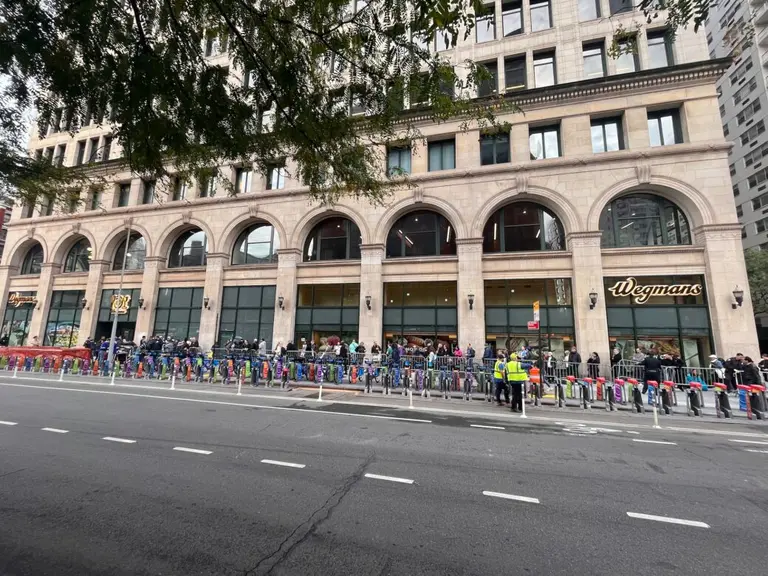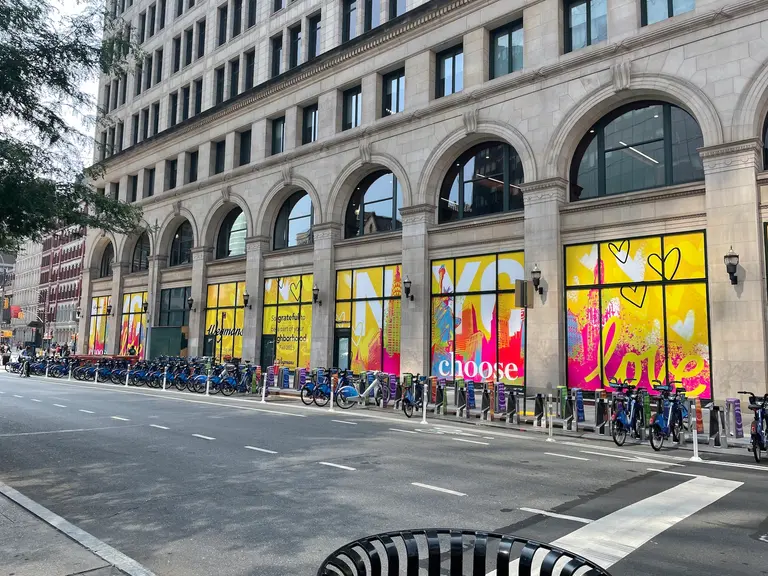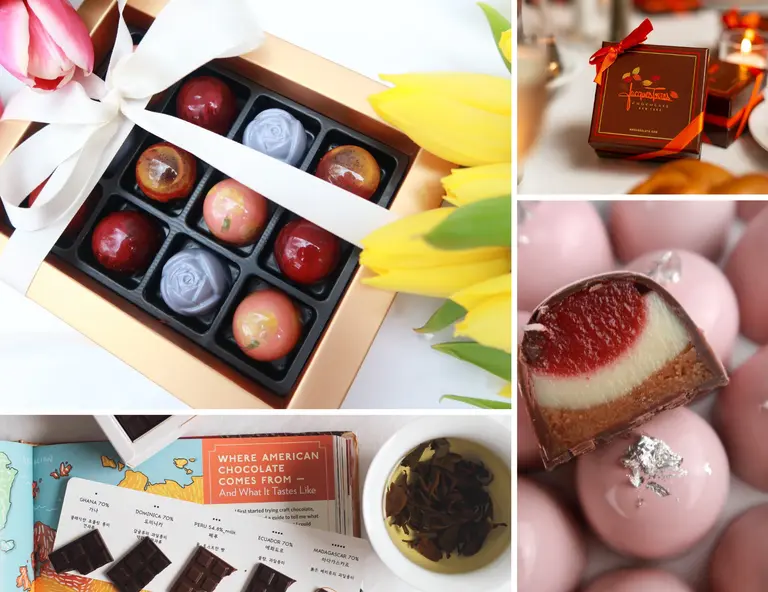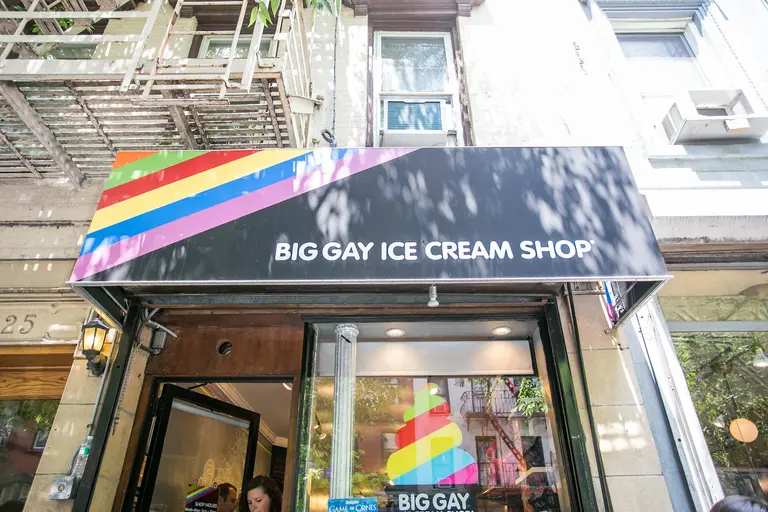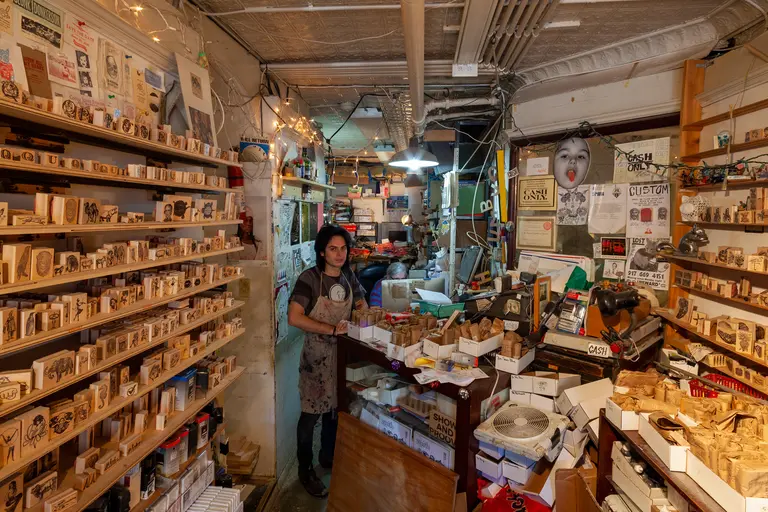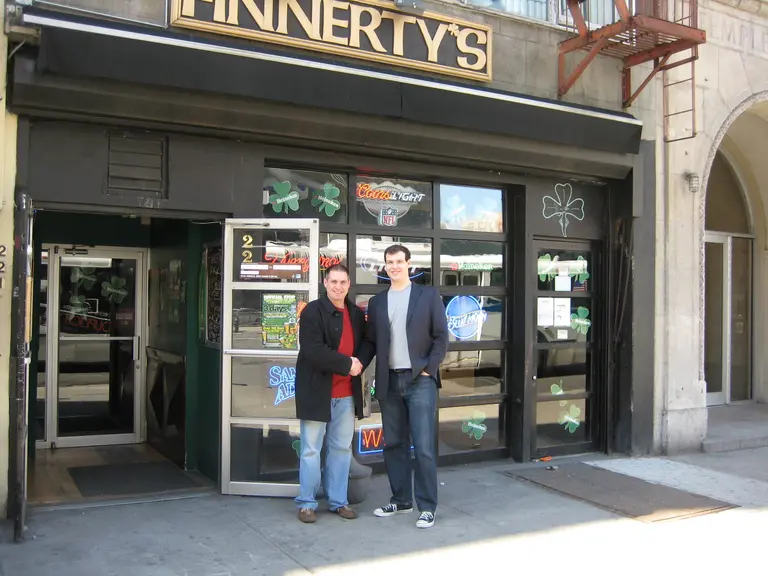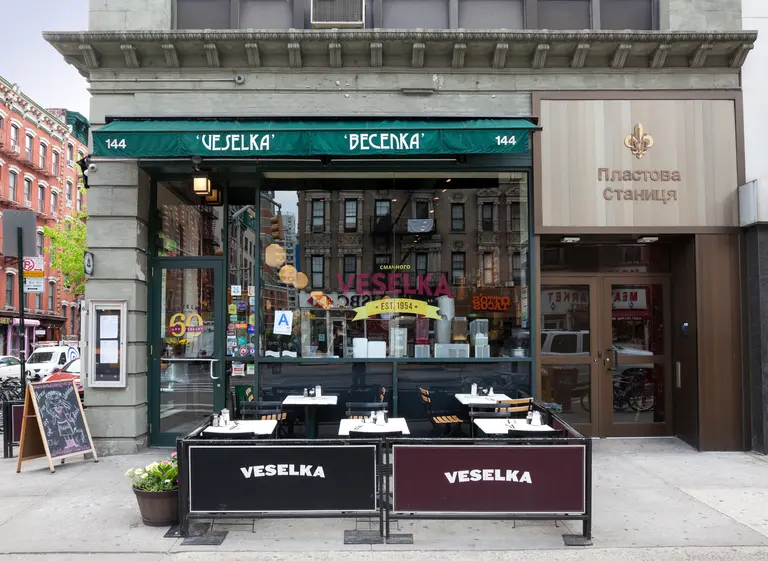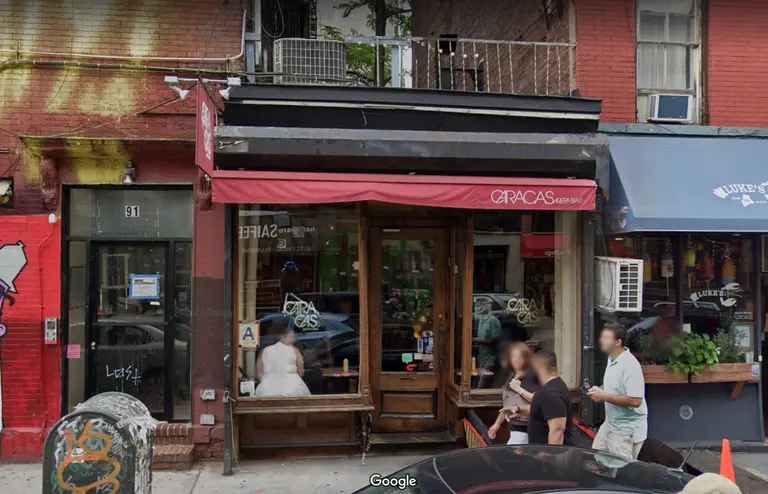Pierogis, borscht, and Ukrainian history: Behind the scenes at East Village restaurant Veselka
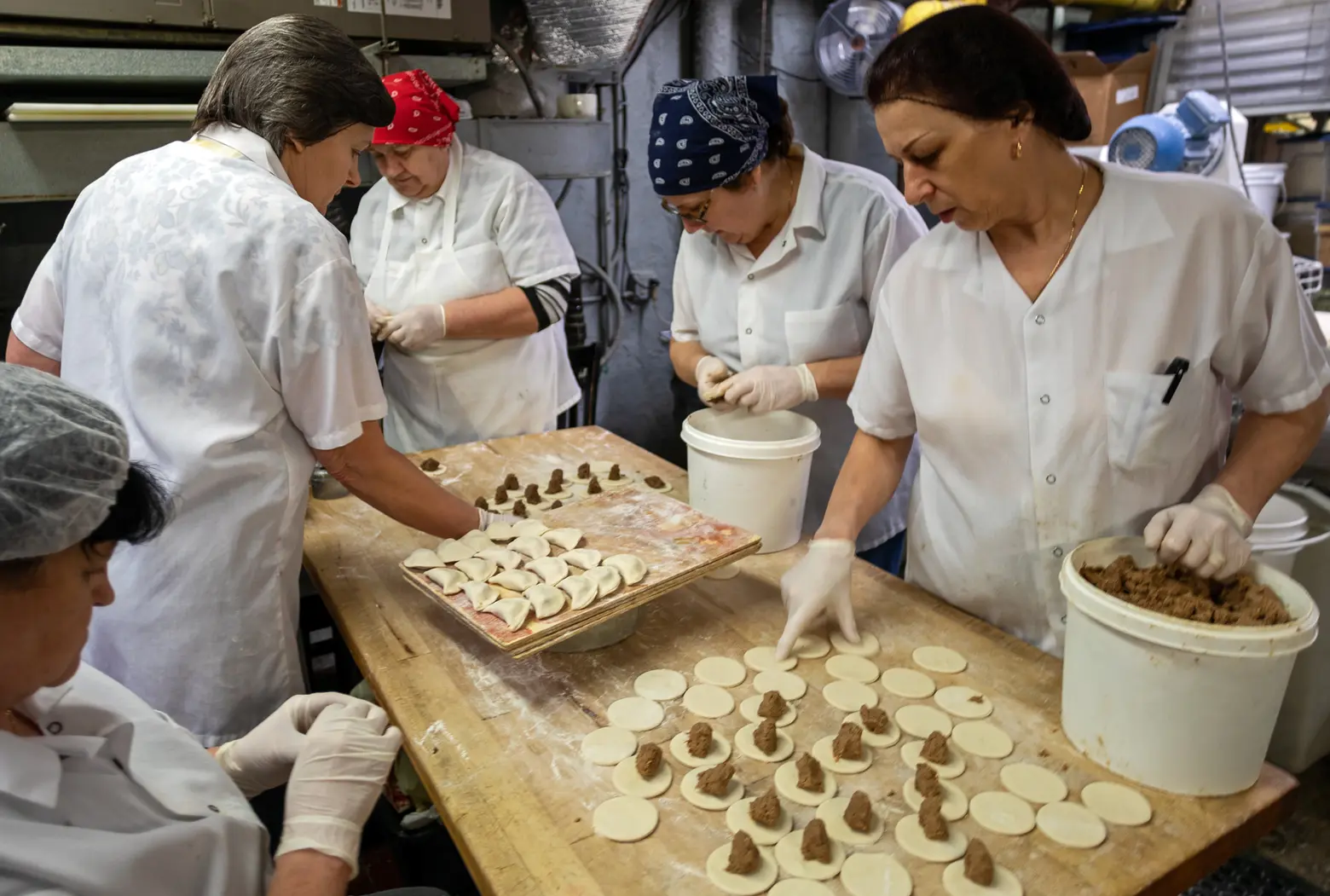
All photos taken by James and Karla Murray exclusively for 6sqft
21,000 pierogis, 2,500 latkes, and 110 gallons of borscht–that’s how much Veselka is serving up each week. But it’s impossible to quantify how many memories have been made at the famous East Village Ukrainian restaurant, which has been in operation since 1954. Whether it’s grandparents who remember going to what was then a small candy shop and newspaper stand at a time when the East Village was a thriving Eastern European community, or counter-culture icons of the 1970s, or club kids of the ’90s, or the NYU students of today, you can bet that nearly every New Yorker has some story of enjoying a meal at Veselka.
6sqft recently got a behind-the-scenes tour of Veselka’s kitchen to see how the magic happens, in addition to chatting with third-generation owner Jason Birchard. Ahead, check out all the photos and learn about the history of Veselka.
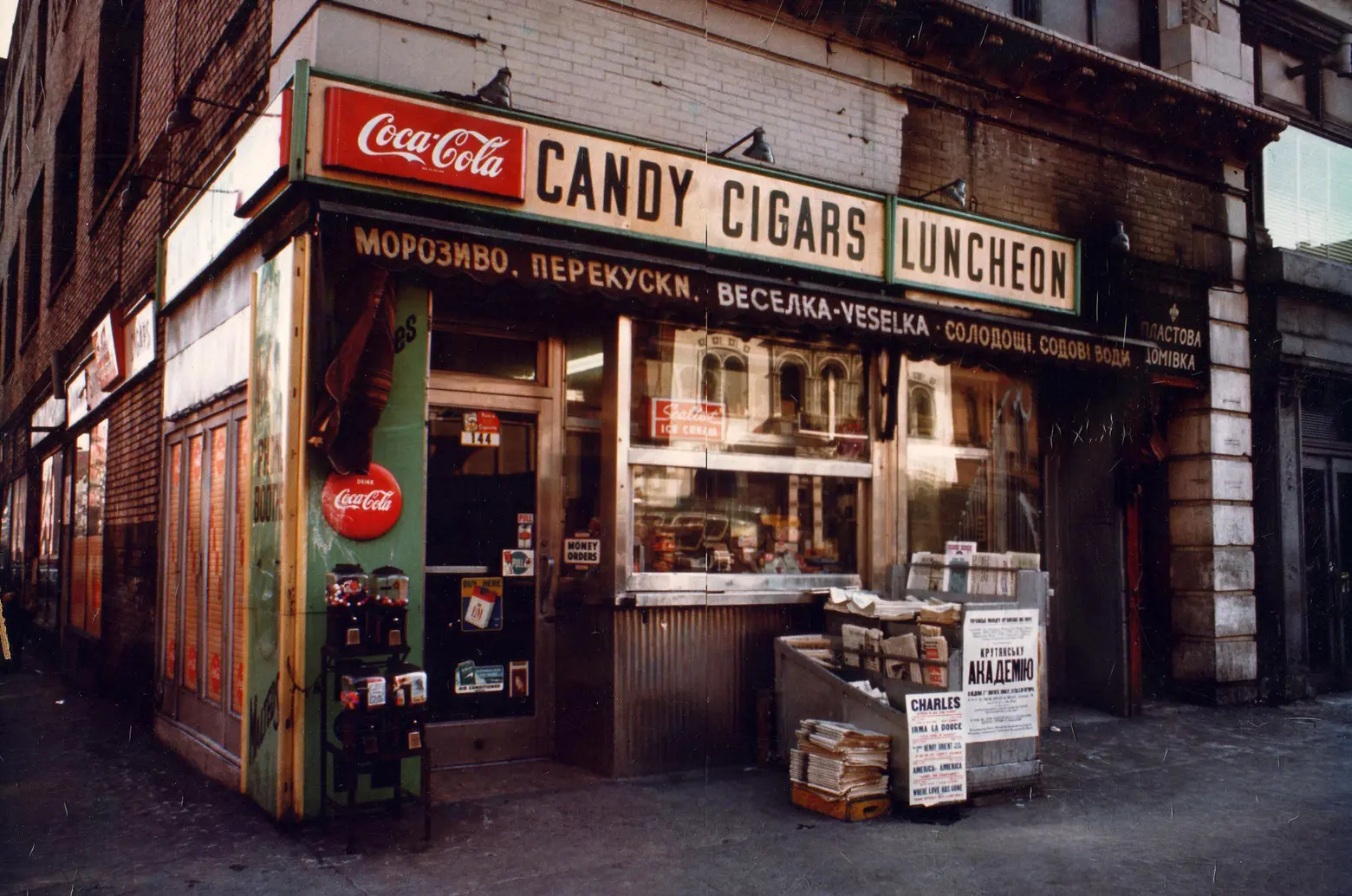 Veselka in 1970, photo courtesy of Veselka
Veselka in 1970, photo courtesy of Veselka
By the 1880s, the Lower East Side (which then included today’s East Village, as well) accounted for one-fourth of New York City’s total population, and by the 1950s, Ukrainian immigrants began pouring into the city, reportedly topping 60,000. A very close-knit Ukrainian community formed in the East Village centered around East 7th Street, where St. George’s Ukrainian Church is located. In fact, this area became known as the “Borscht belt,” in large part due to the many Eastern European restaurants that opened.
One such restaurant that still exists today is Veselka, the Ukrainian word for “rainbow.” In 1944, Wolodymyr Dararmochwal came to the East Village from Ukraine after being displaced under Soviet rule. He got very involved in the community, and in 1954, he helped the Ukrainian Youth Organization build its headquarters on Second Avenue. To fund it, he purchased a candy/cigarette store and newsstand that operated out of the corner of the building on 9th Street. At first, it was the newspaper sales that made the business lucrative, as there was nowhere else to buy Ukrainian newspapers. Locals would come in to get their paper and then hang out, talk, and have a coffee or one of the soups that Veselka was serving. Before long, Dararmochwal expanded into a more traditional coffee shop.
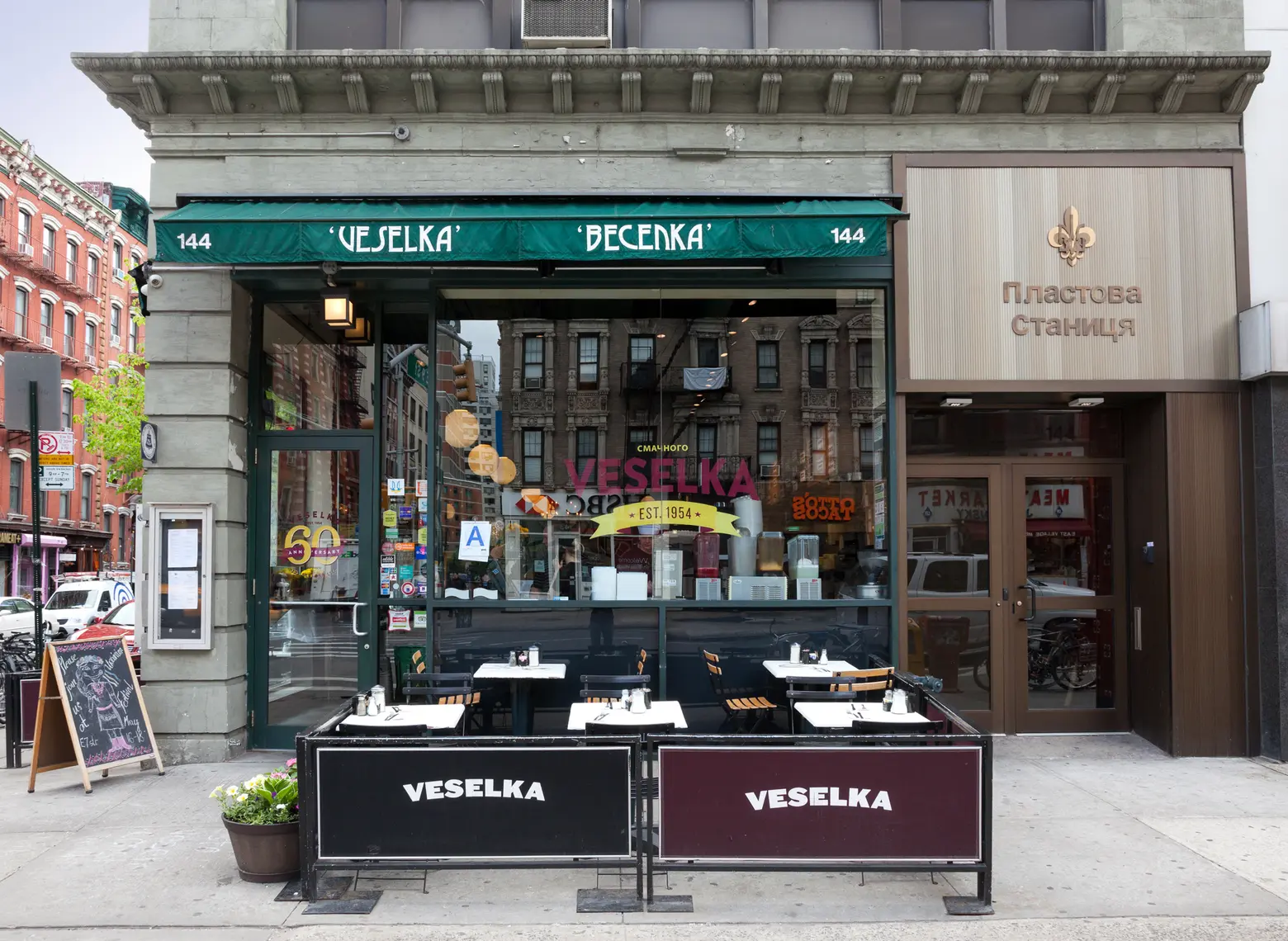
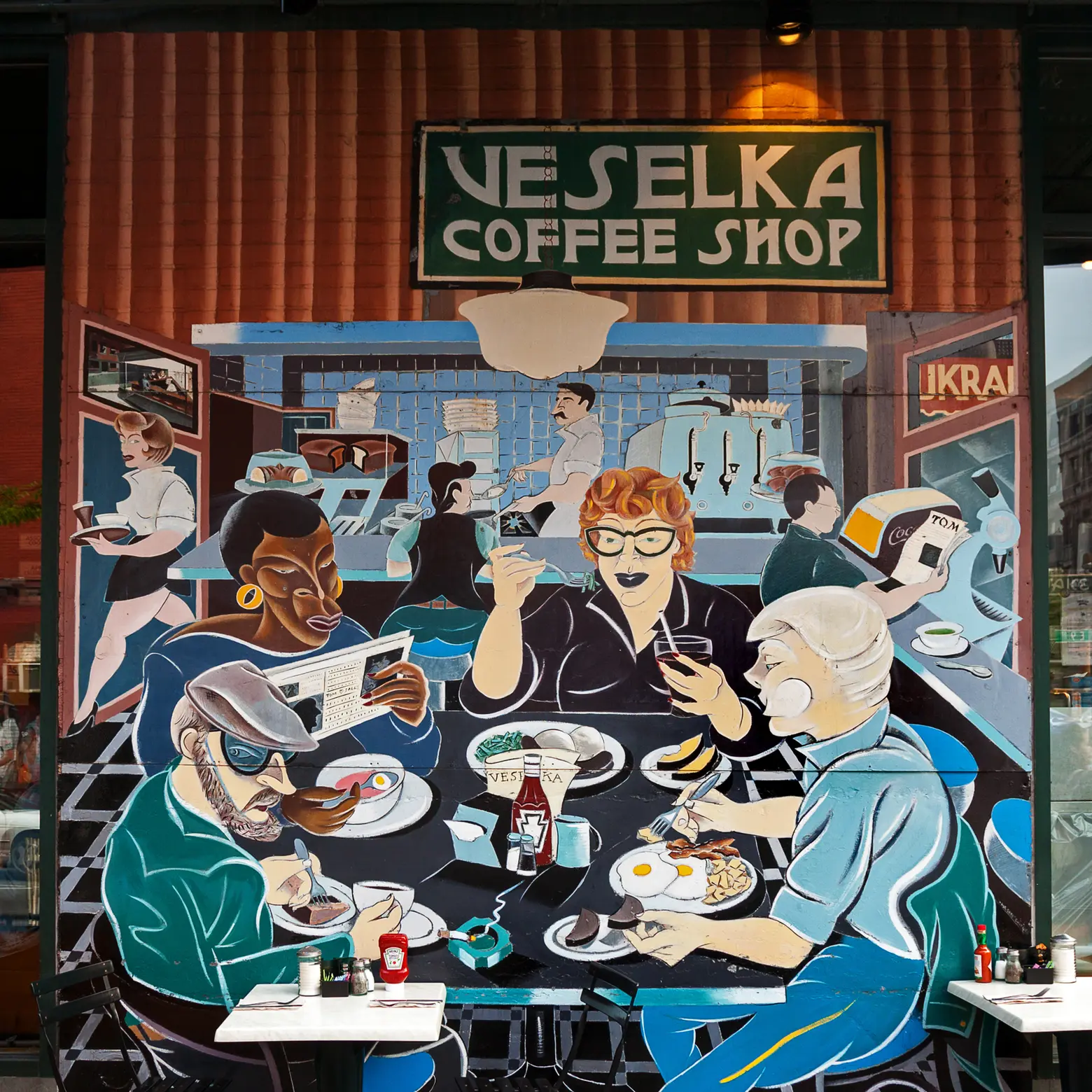 The Second Avenue storefront today (top) and the well-known mural on the Ninth Street facade (right). The mural has been up since 1980; It was done by local artist Arnie Charnick and is called “Luncheonette Life.”
The Second Avenue storefront today (top) and the well-known mural on the Ninth Street facade (right). The mural has been up since 1980; It was done by local artist Arnie Charnick and is called “Luncheonette Life.”
In 1975, Tom Birchard took ownership of the business. A decade earlier he met Wolodymyr Dararmochwal’s daughter Marta at a party while they were both attending Rutgers University. They married the following year, and Tom began working at the restaurant. Though he and Marta later separated, Tom still took over the business, and today it’s run by him and his son Jason.
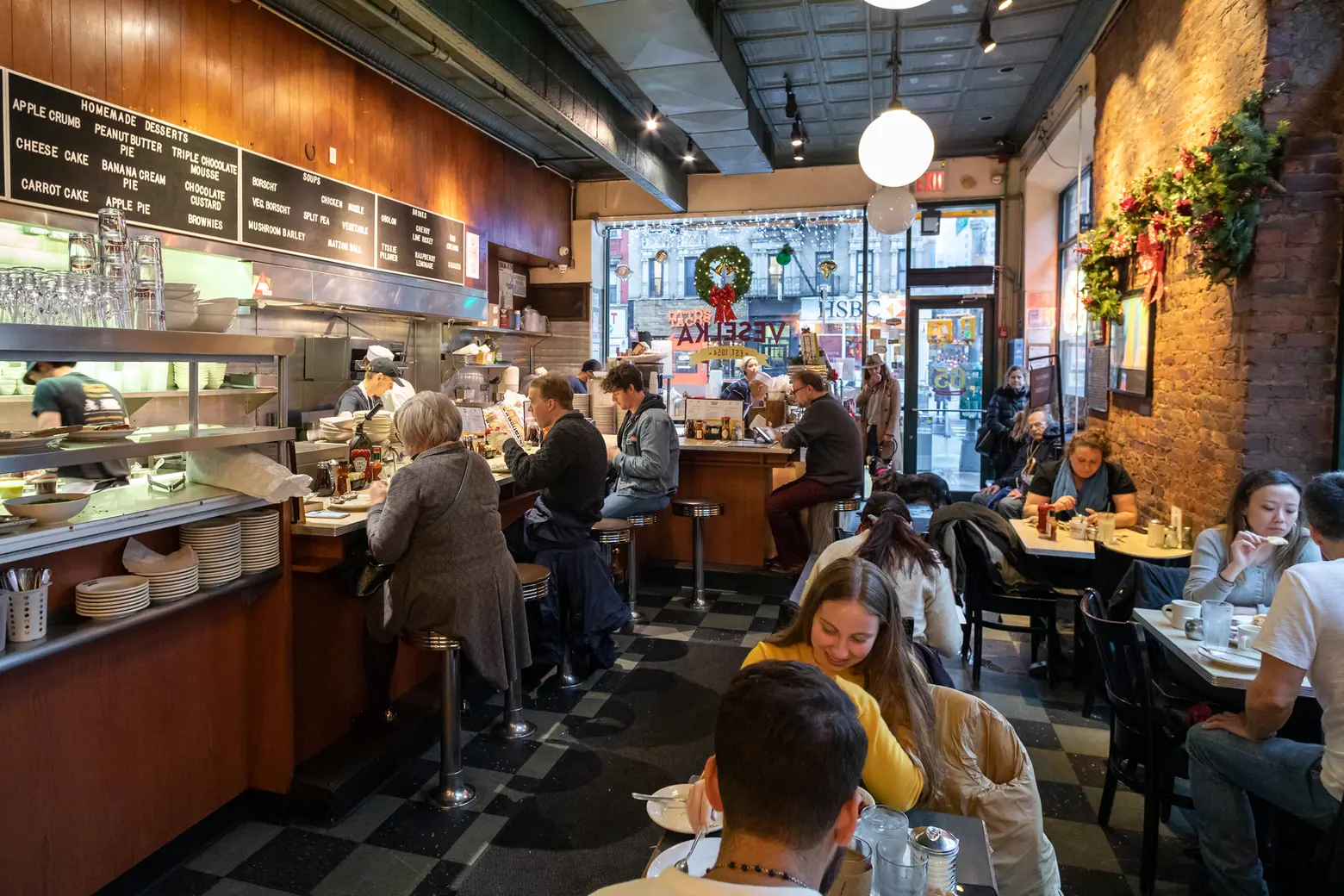
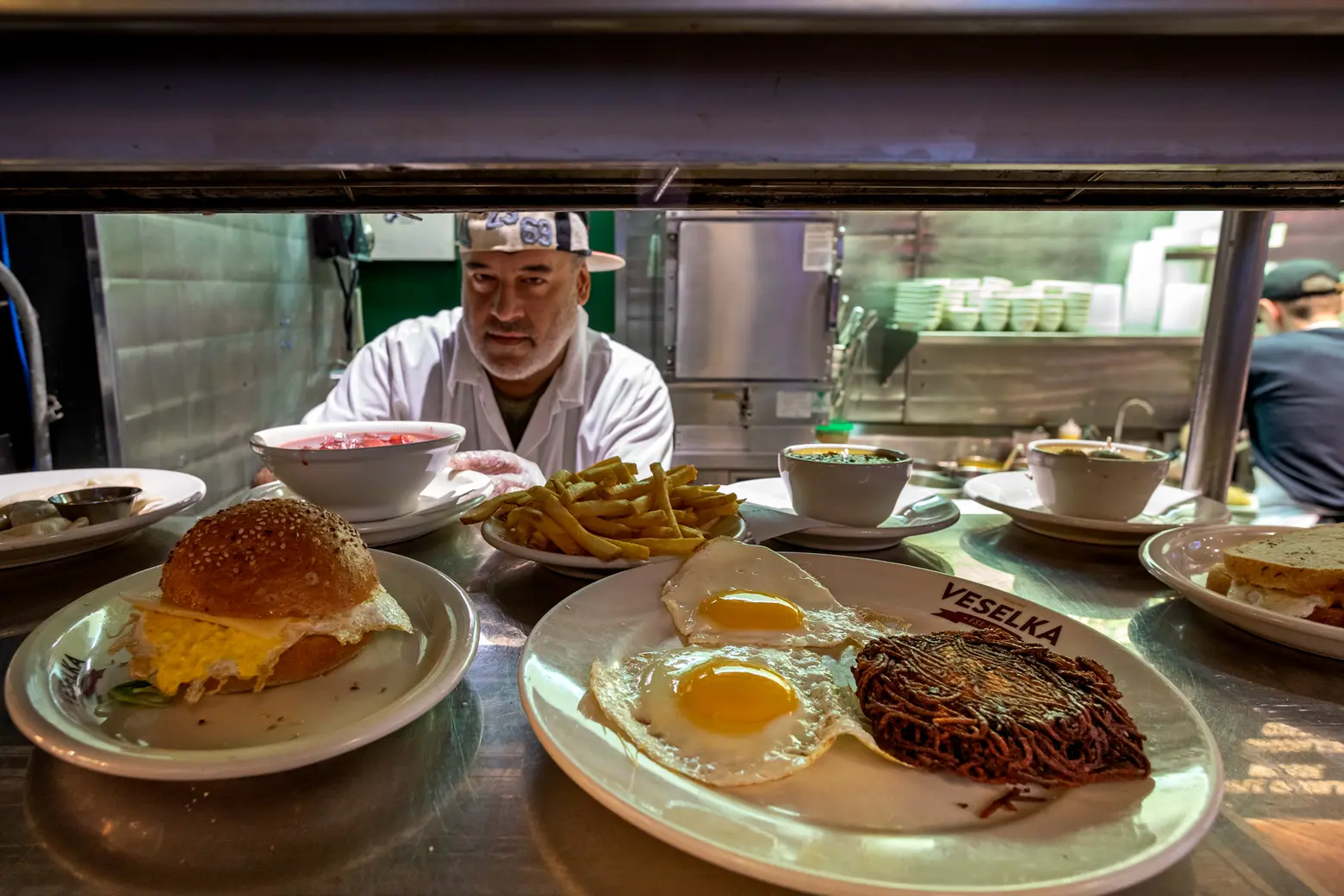
Tom made a major change to the restaurant, which was to introduce an expanded menu. He started first with breakfast, which was a big hit, then added pierogi, and before long, the menu became what it is today. In a 2010 interview with the New York Times, performance artist and writer Penny Arcade explained the culture at Veselka during the ’60s and ’70s: “It had the Village Voice before anywhere else, a row of phone booths, smokes for a dime and cheap good food that never changed.”
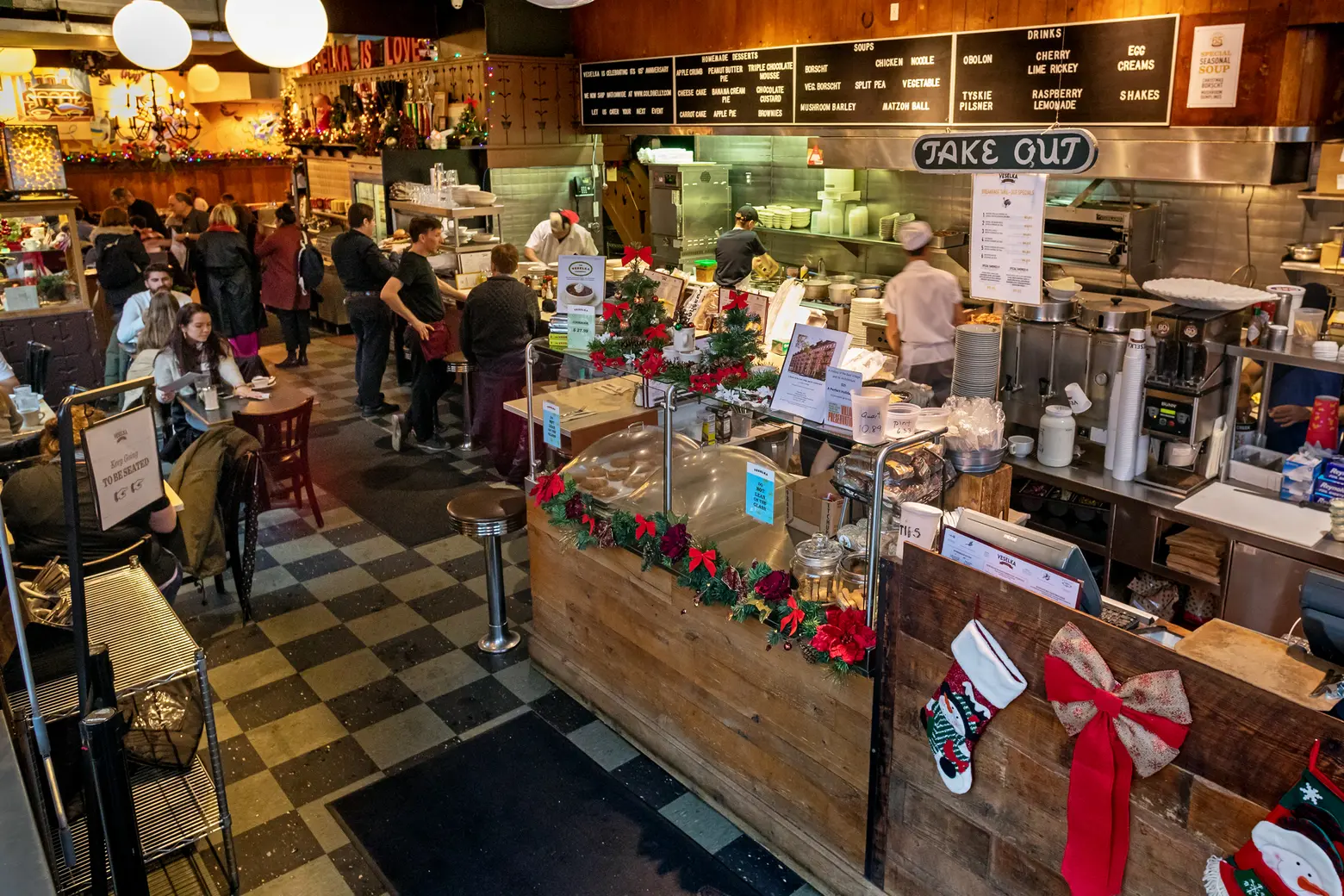
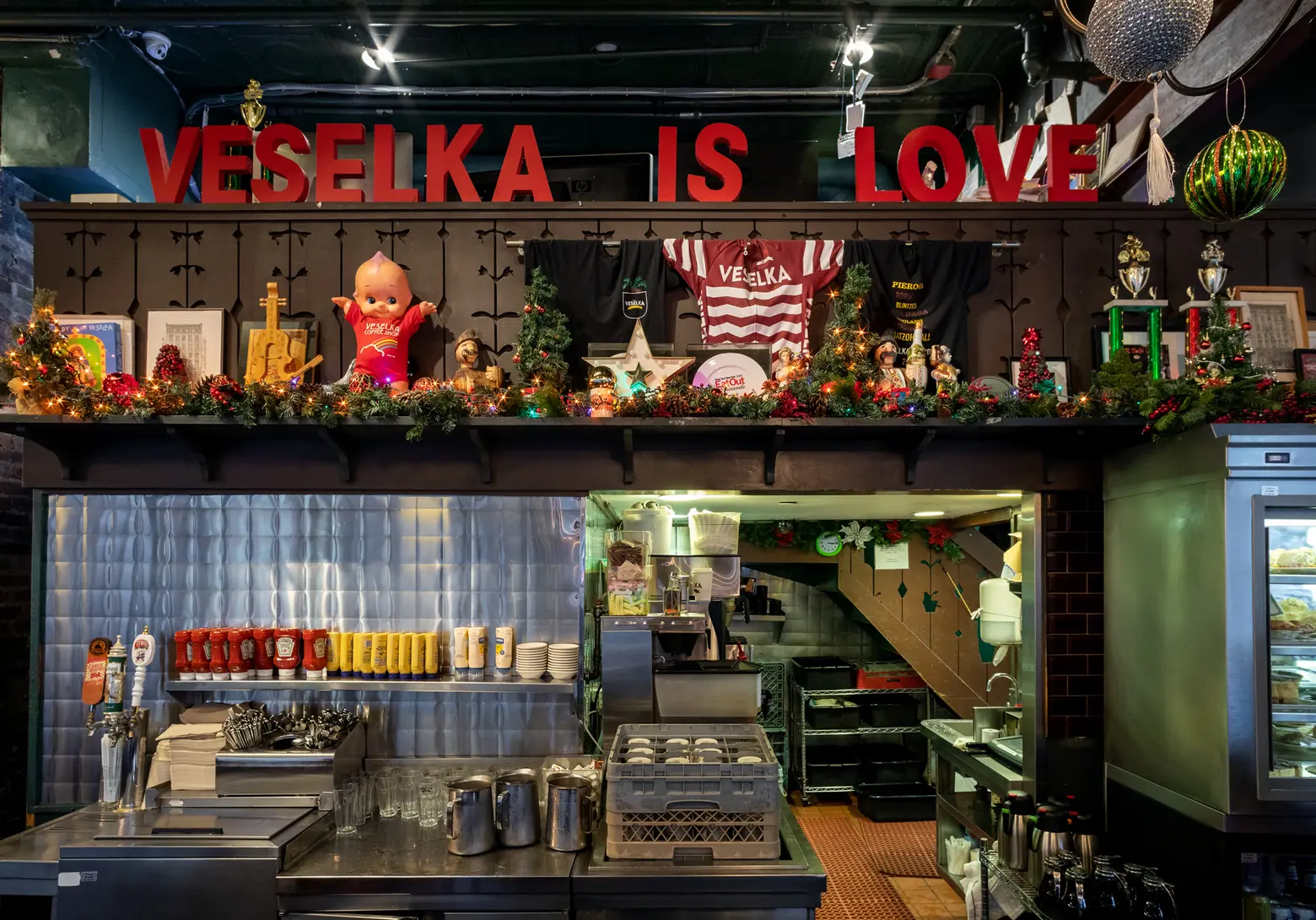
Perhaps one of the most well-known aspects of Veselka is the fact that it’s open 24-7. Jason started this on the weekends in 1990. It was such a success that they soon expanded to seven days a week. Today, Veselka is one of the very few restaurants in the city with these hours, which is popular among local college students and others in the restaurant or bar industry. (In the 2008 movie “Nick and Norah’s Infinite Playlist,” the two main characters go to Veselka late-night for pierogis.)
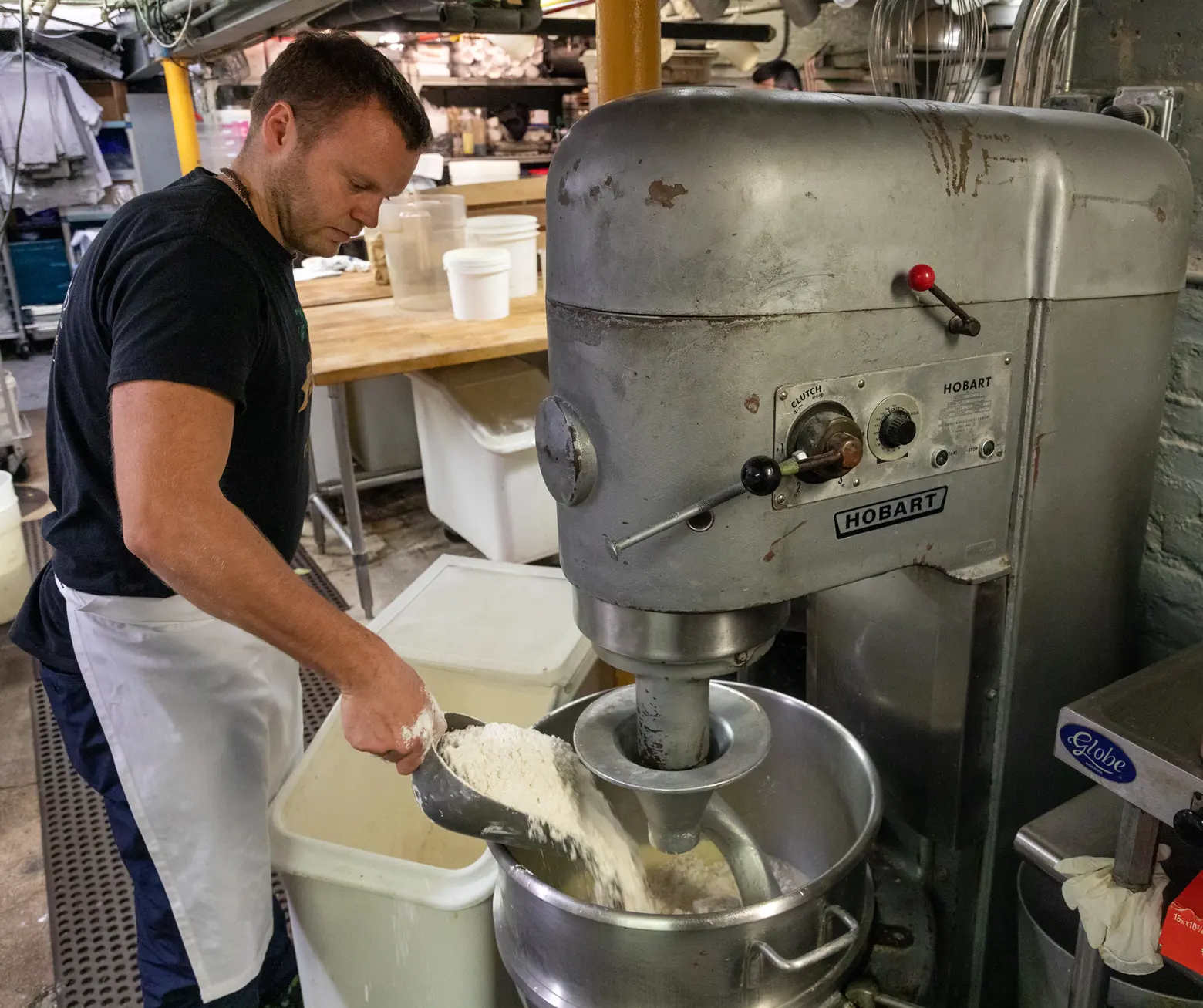
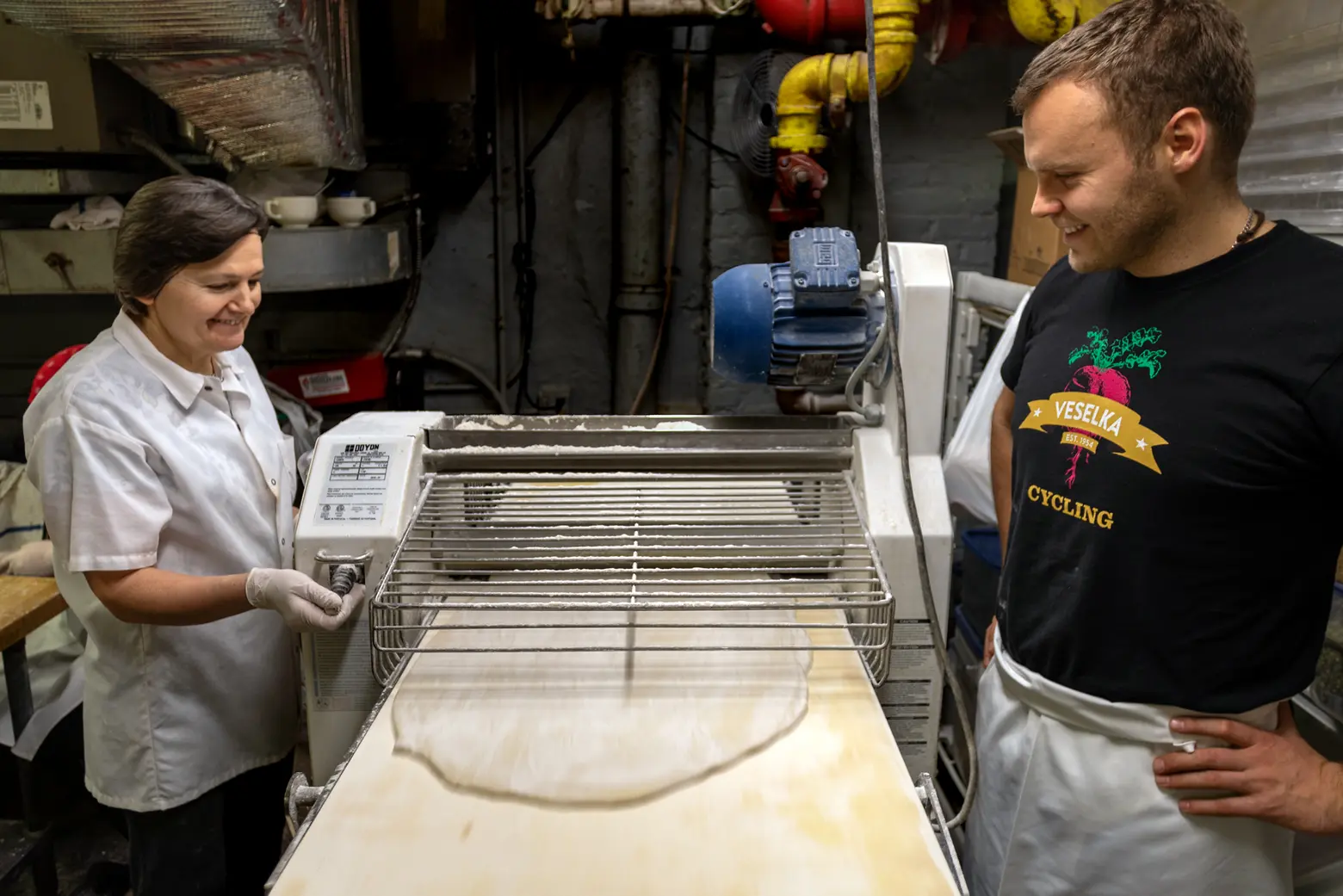 Chef Dima adds ingredients to the mixer for the dough, which then rests overnight (top). The dough then gets rolled out on a flat-sheeter (bottom).
Chef Dima adds ingredients to the mixer for the dough, which then rests overnight (top). The dough then gets rolled out on a flat-sheeter (bottom).
Though Veselka serves all the classic Ukrainian dishes– veal goulash, stuffed cabbage, bigos–it’s undoubtedly their pierogies that are most popular. Dima Martseniuk has been working with Veselka for the past 10 years, the last five of which he’s been the executive chef. In many ways, he has really elevated the restaurant’s pierogi game. When he first started, he introduced the short rib pierogi, which is now one of the most popular. He also creates seasonal fillings, such as buffalo chicken in January for the Super Bowl, farmers’ cheese with cherries in February for Valentine’s Day, pumpkin in the fall, and lobster in the summer. In addition, Dima has brought pierogi-making to the larger community with monthly cooking classes that he hosts in the Veselka kitchen.
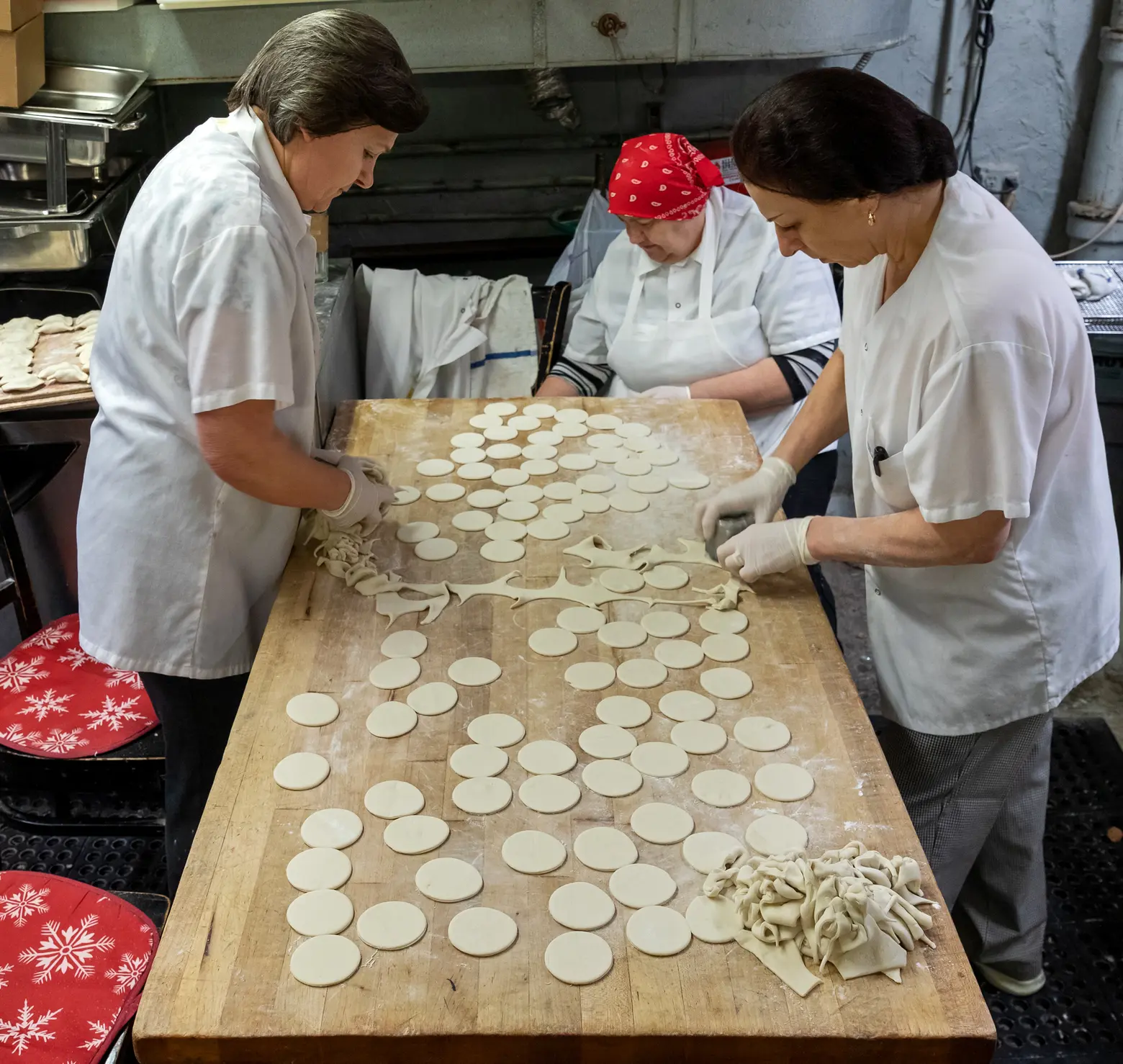
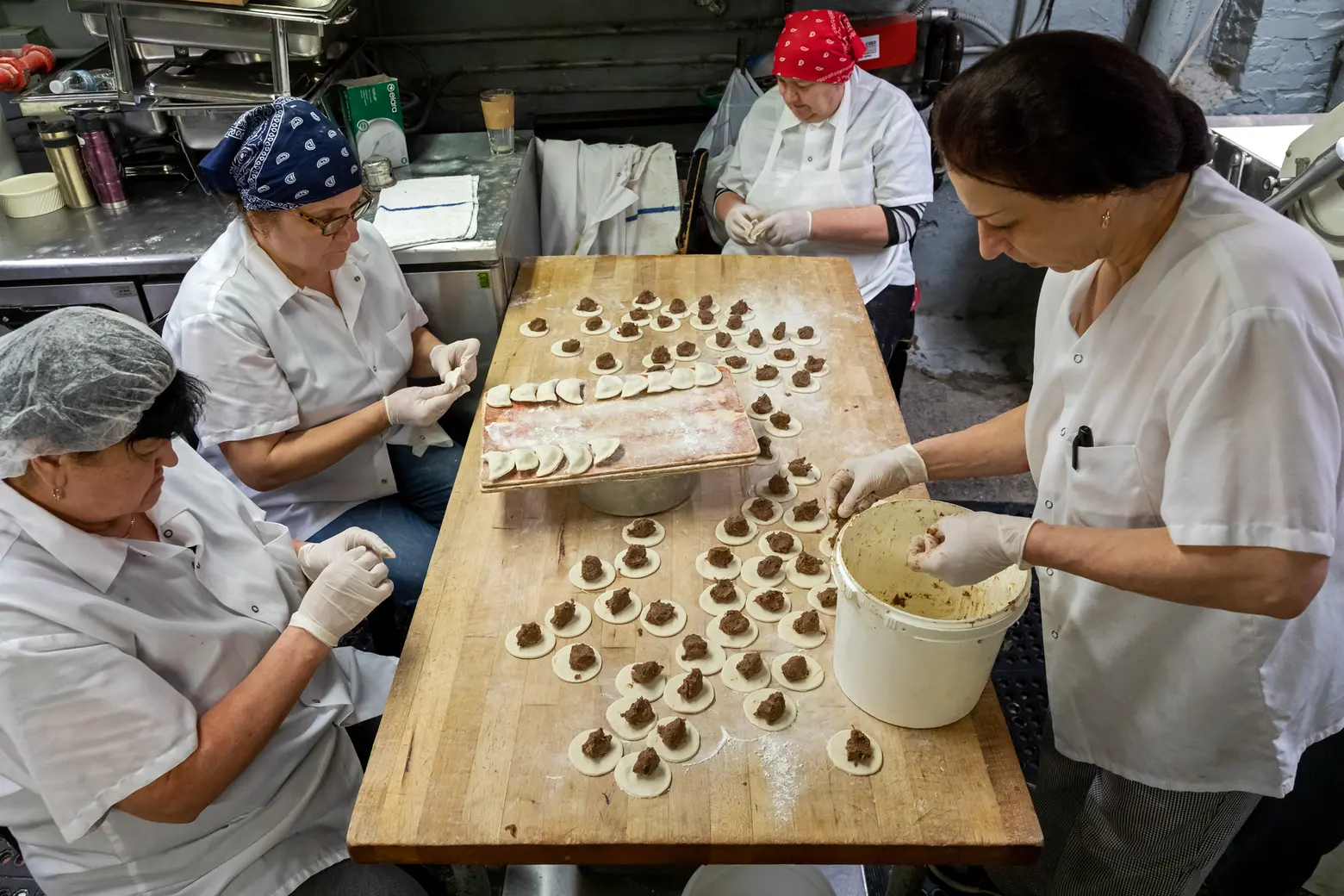
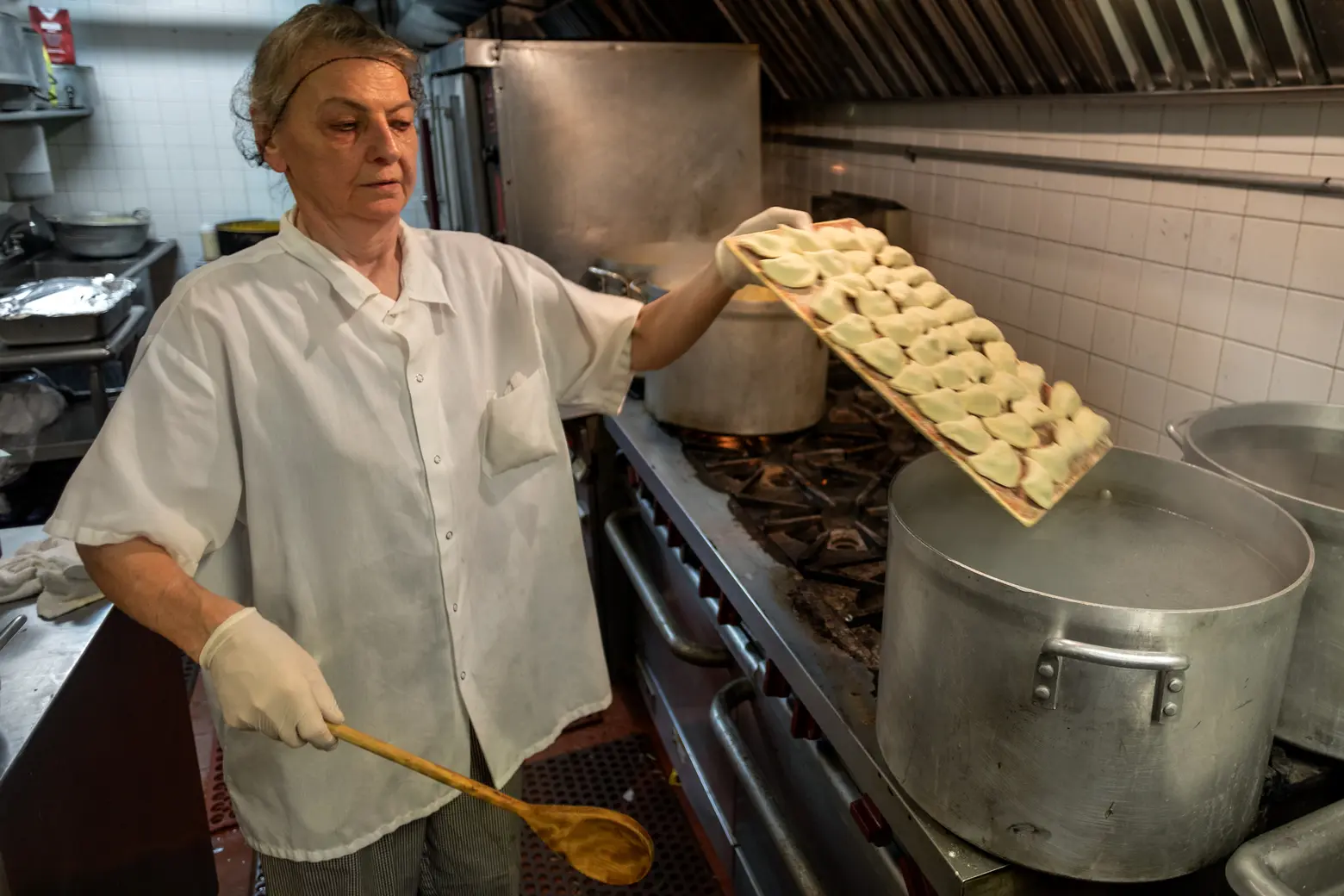
40 pierogi fit on each board; above, the team is assembling short rib pierogi.
Each day, Veselka makes 3,000-4,000 pierogi! Veselka employs several Eastern European women who are experts in pierogi-making. Four women work on assembly–cutting out the dough with a cookie cutter, filling them, and crimping them–and one does the boiling.
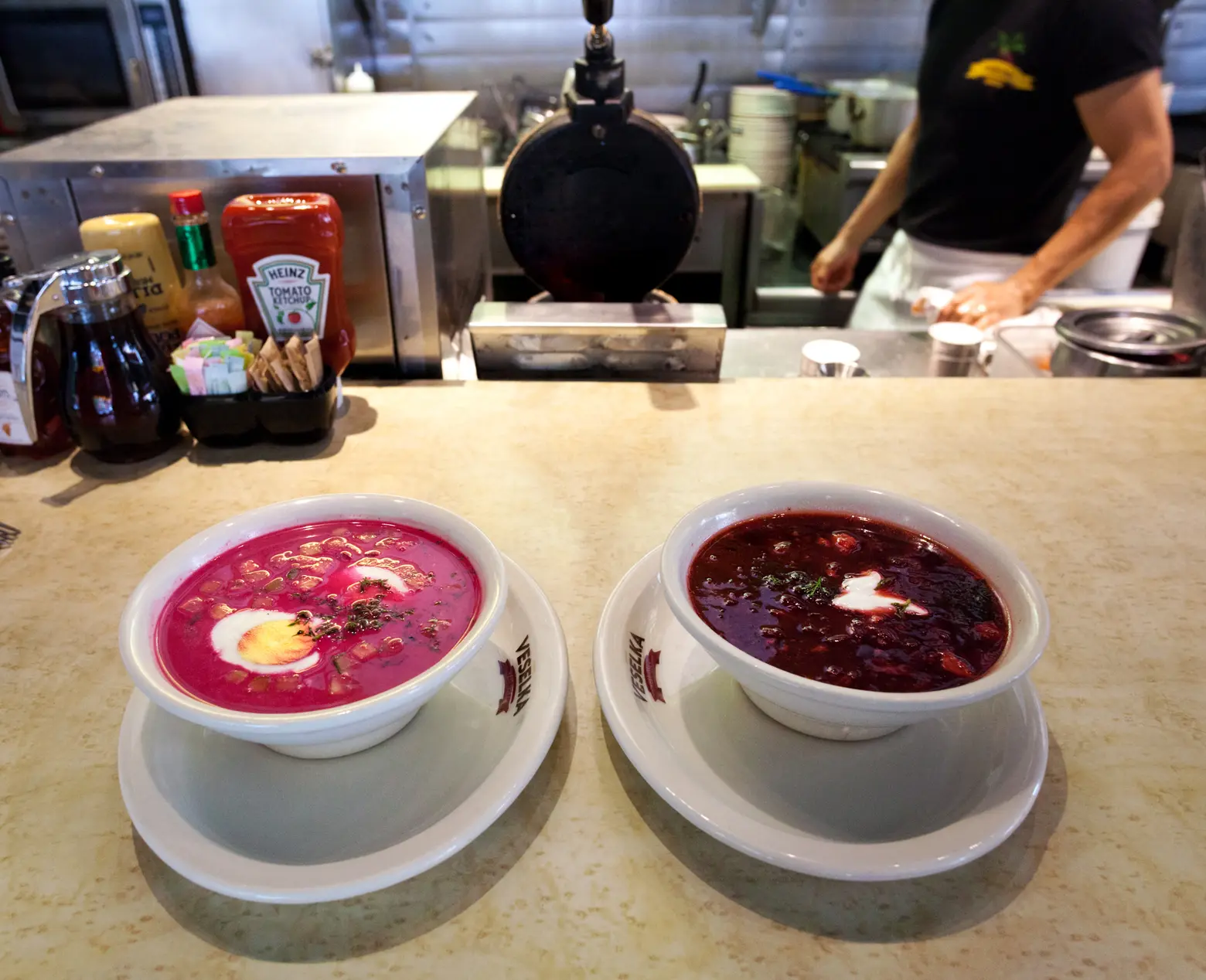
The cold, summer borscht (left) and the traditional hot borscht (right)
Borscht is another popular staple at Veselka, and the team makes 110 gallons (that’s 250 pounds!) of it each week. The recipe calls for 18 gallons of beef stock, 50 pounds of pork butt, 30 heads of cabbage, one case of potatoes, 20 pounds of lima beans, carrots, and celery.
The other uber-popular item here is potato pancakes, of which Veselka makes around 2,500 each week. In fact, chef Dima has won the annual Latke Festival three times: In 2019 for his Rueben latke, in 2018 for his sweet and savory short rib latke, and in 2016 for his truffle/cheese latke.
Kielbasa, an Eastern European smoked sausage, also features prominently on the menu, and Veselka gets this from Baczynski East Village Meat Market, a Polish/Ukrainian butcher across the street that opened in 1970. The Market smokes its own Kielbasa and also supplies Veselka with ground pork, ham, and other meats. They’ve been working together for more than 60 years.
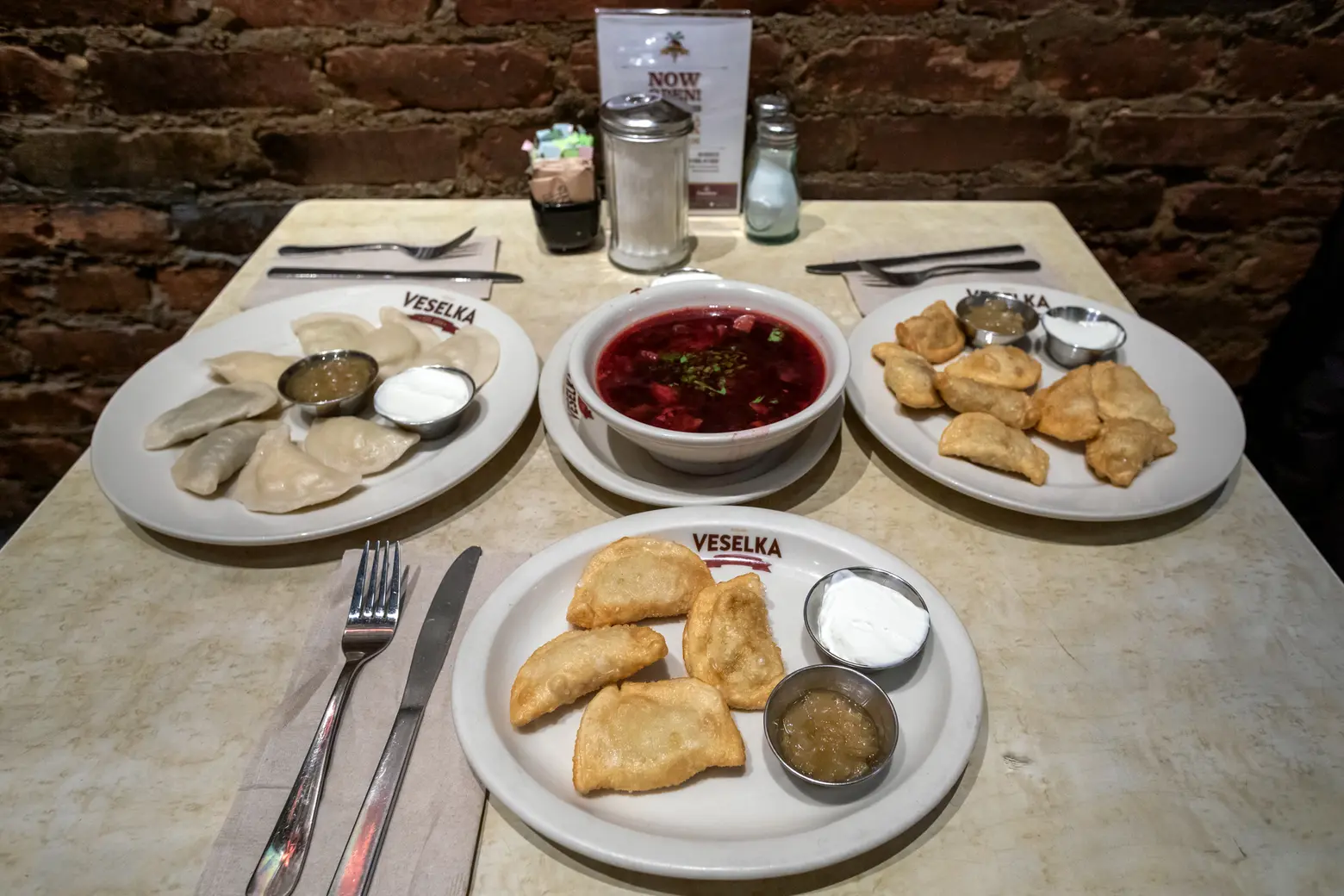 Customers can order their pierogi boiled or fried. They are served with the traditional combo of sour cream and applesauce.
Customers can order their pierogi boiled or fried. They are served with the traditional combo of sour cream and applesauce.
In more recent years, Veselka has expanded with a stall in the newly opened Market Line food hall at Essex Crossing. They also run a kiosk at the Union Square holiday market. And if you don’t live in NYC, they ship their pierogis, borscht, and several other menu favorites via Goldbelly!
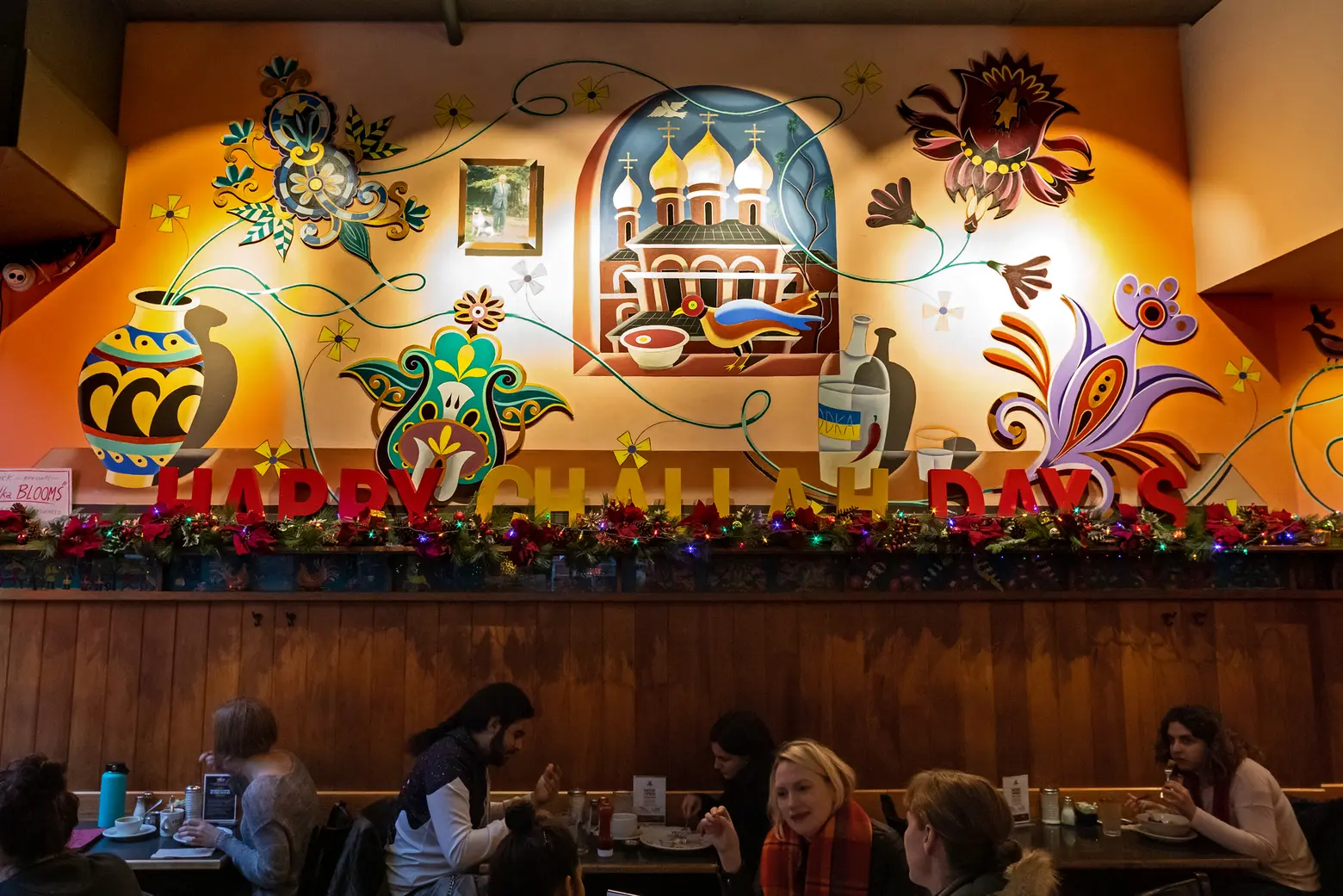
The mural in the back of the restaurant rotates every few years; the current piece is also by Arnie Charnick and is titled “Veselka Blooms.”
The prices are reasonable, the food is delicious, but in the previously mentioned Times interview, Penny Arcade hits the nail on the head when describing Veselka’s staying power: “It’s because of how Tom Birchard welcomed the whole community of the East Village that Veselka is still around and still popular.”
To get even more behind-the-scenes details from Veselka, as well as to learn about other East Village Ukrainian establishments like Baczynski East Village Meat Market, check out this video from James and Karla Murray:
RELATED:
- A New York Minute With Veselka Restaurant Owner Tom Birchard
- Cannoli, cheesecake, and an East Village icon: See history in action at 125-year-old Veniero’s Pastry
- 102-year-old Orwasher’s Bakery is preserving NYC nostalgia while adapting to the times
All photos taken by James and Karla Murray exclusively for 6sqft. Photos are not to be reproduced without written permission from 6sqft.
